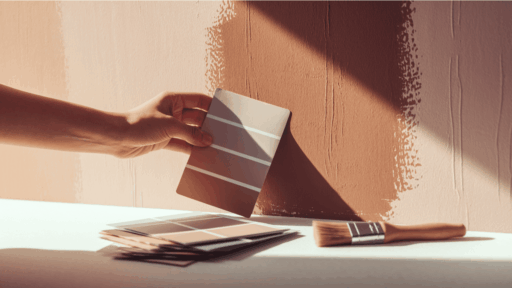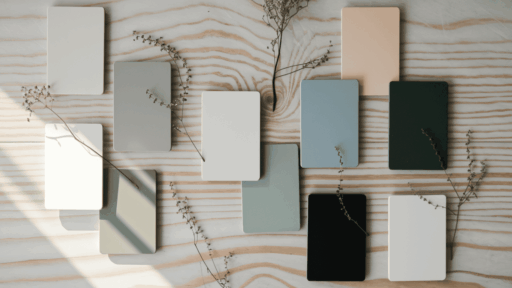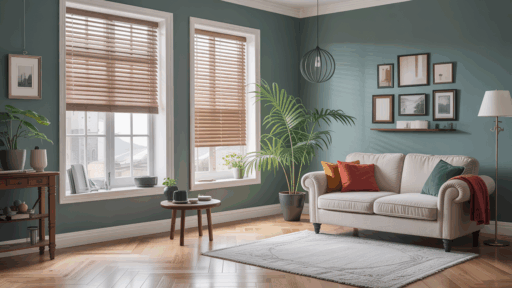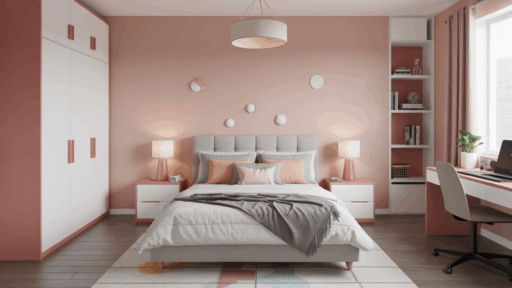Ever stared at your wall, trying to figure out why your “perfect match” paint looks completely wrong?
Matching paint colors can feel like solving a mystery!
Proper paint matching saves resources and headaches if you’re repairing damage, refreshing rooms, or creating a cohesive color flow.
Even small color differences can be obvious to the eye, making your fix-up job look worse than the original problem.
The good news?
You don’t need to be an artist or interior designer to get it right.
Here we break down color matching into simple steps anyone can follow.
Learn professional color-matching tools and techniques, from apps to store scanners, that ensure perfect results across various surfaces.
Understanding Color Basics
Colors aren’t as simple as they first appear!
The color wheel shows how colors relate to each other, which helps you make good matching decisions.
Undertones are the hidden colors beneath the main color – they’re why some whites look bluish and others look creamy.
Lighting changes everything about paint color – a shade that looks perfect in the store might look completely different in your home.
Morning light, afternoon sun, and lamp light all create different effects.
Finally, paint finishes range from flat (no shine) to high-gloss (very shiny), and each finish affects how we see the color.
Understanding these basics will make your color matching much easier!
Common Paint Matching Scenarios

Most of us need to match paint colors at some point.
Here are the typical situations when you’ll need these skills in your home.
- Fixing wall damage without any leftover paint from the original job.
- Creating a smooth flow between connected rooms with colors that work well together.
- Making new furniture look amazing against perfectly matched wall colors.
- Preserving the original color charm of an older home you just moved into.
- Dealing with uneven fading where sun damage affected some walls but not others.
These situations don’t have to be stressful if you know some basic tricks.
With the right tools and a bit of patience, you can solve any of these paint matching challenges.
Tools and Resources for Paint Matching
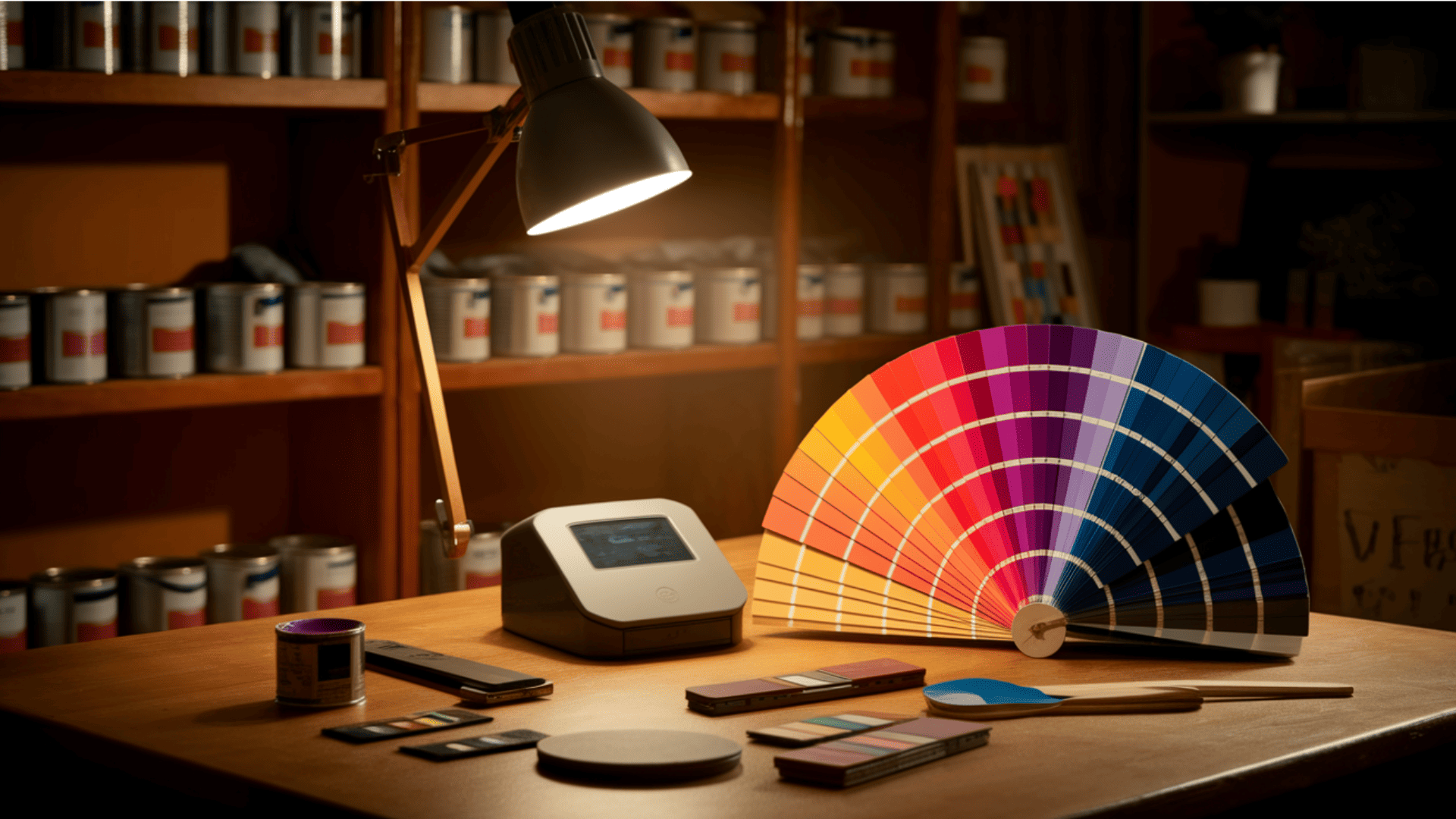
Finding the right tools makes paint matching much easier.
You don’t need to guess at colors anymore!
Here are some helpful resources that can save you time and frustration.
1. Color Matching Apps and Technology
Your smartphone can now help you match paint colors!
Apps like ColorSnap or ColorReader let you take a picture of any color you like.
The app will tell you the closest paint match from popular brands.
Some apps even show how the color would look in your room.
Most color matching apps are free or cost very little.
They work best in good lighting and with solid colors rather than patterns.
2. Paint Company Color Scanners
Many paint stores have special devices that scan colors with amazing accuracy.
Bring a chip of your paint (about the size of a quarter) to stores like Sherwin-Williams or Benjamin Moore.
Their scanners will read the exact color and create a perfect match.
This service is often free when you buy paint.
These scanners can even match colors from fabric, tile, or other home items.
3. Physical Color Matching Tools
Color fans and paint decks help you compare colors side by side.
Professionals use the Pantone color guide to find exact matches.
Small color readers like the Nix Mini scan surfaces and give you paint codes.
Paint stores often sell inexpensive plastic cards with color formulas.
These tools work without batteries or internet and can be used anywhere.
4. Paint Swatches and Fan Decks
Free paper paint samples are the simplest matching tool.
Take several close matches home to compare in your lighting.
Most stores have large fan decks with hundreds of color options.
Place samples directly against the color you’re trying to match.
View them at different times of day for best results.
Keep your favorites in a folder for future projects.
A Step-by-Step Guide to Matching Paint
Matching paint doesn’t have to be hard.
Just follow these five simple steps and you’ll get great results every time.
- Cut a small piece of painted wall (one inch square) from a hidden spot, like behind furniture.
- Take your sample to multiple paint stores for the best chance of finding a perfect match.
- Always test new paint on a small wall area and wait for it to completely dry.
- View your test patch in morning, afternoon, and evening light before making your final decision.
- When painting, feather the edges by brushing outward with a nearly dry brush for invisible repairs.
These steps will save you from the frustration of mismatched paint.
Take your time with each step and don’t rush the process.
Your patience will pay off with beautiful, flawless results.
DIY Paint Matching Methods

You don’t always need fancy tools to match paint colors.
With some patience and these simple methods, you can solve many color matching problems yourself.
Here’s how to become your paint-matching expert.
1. Using Paint Chips for Comparison
Grab lots of paint chips from the store that look close to your color.
Place them directly against your wall in good light.
Narrow down to the three closest matches.
Look at them at different times of day.
The right match will blend in at all hours.
If possible, get larger sample cards for better comparison.
Trust your eyes more than the color names on the chips.
2. Creating Test Patches
Buy small sample pots of your top color choices.
Paint 12-inch squares of each color on your wall.
Label each patch so you remember which is which.
Let them dry completely before judging – wet paint looks different.
Check the patches morning, noon, and night.
The right match will be hard to see against the original color in all lighting conditions.
3. Mixing Small Batches to Find the Right Match
Sometimes you need to create a custom blend.
Start with a close base color.
Add tiny amounts of tint to adjust the color.
Use toothpicks to add drops of tint.
Mix thoroughly and test on paper that you let dry.
Keep careful notes about what you added and how much.
Once you find the perfect mix, ask the paint store to match your sample.
4. Tips for Documenting Your Custom Colors
Save paint codes and formulas on your phone and in a home folder.
Take pictures of paint cans showing the exact color names and numbers.
Keep a small jar of each paint color labeled with the room and date.
Paint a swatch in your home maintenance notebook for easy reference.
Stick leftover paint chips to index cards with the paint information written on them.
Troubleshooting Common Paint Matching Problems
Finding the perfect paint match can be tricky. Here are solutions to the most common problems you might face.
| PROBLEM | CAUSES | SOLUTION |
|---|---|---|
| Faded or sun-damaged areas | UV exposure, aging paint | • Paint entire wall• Match to least faded section• Choose slightly darker shade |
| Discolored patches | Water damage, mold, and grease | • Clean thoroughly• Apply stain-blocking primer• Match to unaffected areas |
| Color variations across surfaces | Different absorption, texture differences | • Use same finish throughout• Apply primer first• Paint corner-to-corner• Roll in “W” pattern |
These solutions should help you overcome the most frustrating paint matching challenges.
Remember that lighting affects how colors look, so always check your matches at different times of day.
Paint Matching for Different Surfaces

Not all surfaces take paint the same way, which affects color matching.
Walls and trim often need different paint types.
Walls usually use flat or eggshell finishes, while trim needs semi-gloss or gloss for durability.
This shine difference can alter color perception! Interior colors match more easily than exterior ones, as sun and weather quickly affect outdoor paint.
Outside colors often need to be mixed slightly darker to account for fading.
Different materials also affect how paint looks – wood absorbs differently than drywall, metal, or plastic.
Always test your match on the actual surface you’ll be painting.
Wrapping It Up
Mastering paint color matching transforms your approach to home maintenance.
With proper tools and techniques, you’ll create seamless repairs that vanish completely.
Always factor in lighting conditions, surface textures, and finish types when seeking the perfect match.
Test small areas before committing to larger sections.
Keep detailed records of your paint colors; this simple habit prevents future frustration.
Professionals trust these proven methods for a reason!
The difference between noticeable repairs and invisible fixes lies in finding that exact color match.
Want to learn more about choosing and using colors in your home?
Explore our paint color tips and guides to make every room look its best.

